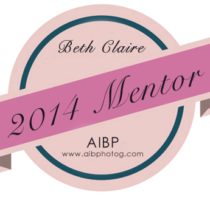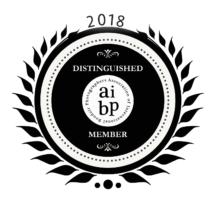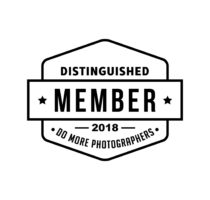I’m so excited for this two part pinup fashion series, written by celebrated pinup model Sadie Century! Pinup fashion is its own animal… part sex appeal, part prim and proper. What makes pinups so recognizable, even all these years later? The silhouette! The hourglass pinup silhouette is an America icon! I’m thrilled to present this two part series, starting with a brief history of pinup girls and pinup fashion. Part II will cover modern pinup reproduction clothing, including where to shop! Lost Highway Imaging is proud to offer vintage-styled pinup photos in addition to our boudoir and glamour offerings! Pinup is actually what I fell in love with about photography 10 years ago when I first began shooting! And I used to sneak into my grandfather’s basement to hide out with his WWII pinup collection as a child! Without those pinups, I might not be where I am today, so pinup will always be something I hold close to my heart! Thank you, Sadie Century, for this eye-opening guest blog!
GOING FULL PINUP: A STEP-BY-DAINTY-STEP GUIDE
PART I: Historically Speaking.
We all recognize a pinup. The luscious girl next door, hamming it up on a seamless white background. She has bright cheeks and innocent eyes that belie a naughty situation. She’s sometimes flanked by a telling prop, or maybe a precocious pet.
Daydreaming about being that girl? In 2017, it seems a little far-fetched. Too antiquated, too strange, or out of our reach.
Not if you’re ready. 😉
But before I start recommending dress styles and pinup vendors, let’s talk a little history. It will help us appreciate pinup beyond aesthetics. Yes, it’s true. Fashion, like everything else, has a deeper meaning.
We tend to define pinup by the girls, well, pinned up on the walls of “Our Boys Overseas” during WWII, or the golden days of the 1950s. But pinups have been around since the late 1800s. Pinups often represented the contemporary feminine ideal—definitive pop culture in its influence, and in its accessibility to the masses. The affluent could keep their stuffy paintings, because pinup pictures were for every man. And they inspired every woman.
Now, pinup encompasses not just the cheesecake images of Elvgren. It’s an entire retro aesthetic. Once a fringe culture, it has strode brazenly into the mainstream in the last decade or so. And why? For one: because it was the first trend to be truly inclusive of all sizes, and it has become the de facto leader of the Body Positivity movement. For two: because now we all hate low-rise jeans!
What I mean by that is, fashion is a contrarian concept. So often, iconic fashions of certain eras have been a direct retaliation against the fashion trends that came directly before them. The flapper dresses of the 1920s? A giant middle finger to the hyper-constructed corsets and elaborate floor-length gowns of the Edwardian era. The thigh-skimming shift dress of the 1960s bucked the tight waist and modest hems of the 1950s—what was once deemed scandalous was now a matter of self-confidence. And our current affection for traditionally feminine silhouettes is a rejection of de-feminizing clothing and ultra-casual vibes that, let’s admit, we’ve all gotten sick of.
So fashion is a swinging pendulum, sure. But then, where did the classic pinup look come from? What fashion was it directly responding to? Well, visualize the 50s and early 60s silhouettes, and you might notice that regardless of shape, color, or style, whether it’s a dress, skirt, or trousers, they all shared the same thing: a pinched waist. The waist was considered sensual and inherently feminine, because it created the hourglass.
This actually goes beyond just being “old-fashioned.” From a historical standpoint, this return to an ultra-womanly shape hadn’t been seen since the early 1900s. The 1920s had the anti-establishment flappers that wanted nothing to do with corsets and elaborate hairdos; that why they had knee-length shifts and bobs. The 1930s were largely dictated the Depression, and the Second World War cast a pall over the 1940s. Fabrics were limited, embargoed because of the war; dresses were minimalist with simple, humble lines, purposefully utilitarian as women recast themselves in the workforce in the name of the Allies.
So in the 1950s, the world let out a collective sigh. The post-war boom of economic and societal reconstruction led to a reintroduction of fancy fabrics with beautiful patterns, and women’s fashion no longer had to stick to wartime minimalism. The woman reclaimed herself—her luxury, her shape, her spotlight.
The pinched waist made its comeback; this, along with a wider hemline from excess fabric in swing skirt, gave the impression of an exaggerated hourglass figure. Accessories got more elaborate, and a little more flirtatious.
And today, 70ish years later, we still freaking love it.
What makes the 1950s and early 60s silhouettes so timeless? They were, after all, just decades. There were sartorial trends before them, and plenty that followed, all influential themselves.
But I think the insistence on femininity—that is, the appreciation for the female body—is key to pinup’s immortal appeal. As I said earlier, pinup culture today is driven by size inclusion. And it’s that embrace of all female forms as inherently beautiful that makes a retro wardrobe so singularly fantastic. You could have the measurements of an XXS or 5X; it doesn’t matter—that hourglass silhouette looks amazing on you. And it should, because you are amazing. You really are.
Pinup culture is about strong women who own and define their femininity for themselves. My next post will explore some brands available to the modern pinup. But for now, let me say: every woman, whether she’s 16 or 60, deserves to feel as beautiful as she is. It’s the reason you should dress to suit your happiness, and it’s the reason you’re considering a photoshoot: to celebrate your life, your femininity, your unique and only you-ness.
So celebrate yourself. <3
.jpg)
.jpg)
.jpg)
.jpg)
.jpg)
.jpg)
.jpg)
.jpg)


















